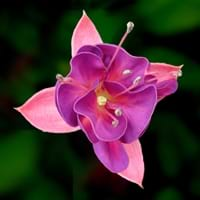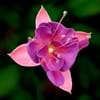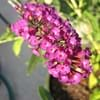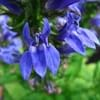Life Span
Perennial
Perennial
Type
Tender Perennial
Tree
Origin
Caribbean
Not Available
Types
Fuchsia Decidua, Fuchsia Fulgens, Fuchsia Splendens, Fuchsia Microphylla
Lagerstroemia villosa, Lagerstroemia subcostata, Lagerstroemia microcarpa
Number of Varieties
Not Available
Habitat
Forest edges, Woods
Coastal Regions, Open Forest, Swamps
USDA Hardiness Zone
9-10
6-10
Sunset Zone
16, 17, 23, 24
H1, H2, 7, 8, 9, 10, 12, 13, 14, 18, 19, 20, 21
Habit
Arching/Fountain-shaped
Upright/Erect
Flower Color
Orange Red
Red
Flower Color Modifier
Not Available
Bicolor
Fruit Color
Not Available
Green, Brown
Leaf Color in Spring
Purple, Dark Green
Dark Green, Burgundy
Leaf Color in Summer
Purple, Dark Green
Dark Green, Burgundy
Leaf Color in Fall
Purple, Dark Green
Burgundy, Dark Red
Leaf Color in Winter
Unknown
Not Available
Leaf Shape
Long Linear
Cylindrical
Plant Season
Spring, Summer, Fall, Winter
Spring, Summer, Fall, Winter
Sunlight
Full Sun, Partial Sun, Partial shade
Full Sun, Partial Sun
Growth Rate
Medium
Medium
Type of Soil
Clay, Loam, Sand
Clay, Loam
The pH of Soil
Acidic, Neutral
Acidic, Neutral
Soil Drainage
Average
Well drained
Bloom Time
Indeterminate
Summer, Late Summer
Tolerances
Drought
Drought, Soil Compaction
Where to Plant?
Container, Ground, Pot
Ground
How to Plant?
Seedlings, Stem Planting, Transplanting
From bulbs, Seedlings, Seperation, Stem Planting
Plant Maintenance
Medium
Medium
Watering Requirements
Requires regular watering
Needs watering once a week, Requires watering in the growing season
In Summer
Lots of watering
Lots of watering
In Spring
Moderate
Moderate
In Winter
Average Water
Average Water
Soil pH
Acidic, Neutral
Acidic, Neutral
Soil Type
Clay, Loam, Sand
Clay, Loam
Soil Drainage Capacity
Average
Well drained
Sun Exposure
Full Sun, Partial Sun, Partial shade
Full Sun, Partial Sun
Pruning
Prune in spring, Prune lower leaves, Remove dead or diseased plant parts, Remove deadheads, Remove shoots
Prune if you want to improve plant shape, Prune to stimulate growth, Remove damaged leaves, Remove dead branches, Remove dead leaves
Fertilizers
All-Purpose Liquid Fertilizer
fertilize every 2-3 weeks while growing, fertilize in growing season, Requires high amount of nitrogen
Pests and Diseases
Rhizoctonia Root Rot, Rust
Beetles, Insects, Powdery mildew, Red blotch
Plant Tolerance
Drought
Drought
Flower Petal Number
Single
Single
Foliage Texture
Medium
Medium
Foliage Sheen
Matte
Glossy
Attracts
Hummingbirds
Birds
Allergy
Asthma, Hay fever
allergic reaction, Asthma
Aesthetic Uses
Showy Purposes
Beautification, Cottage Garden, Landscape Designing, Showy Purposes
Beauty Benefits
Not Available
Not Available
Environmental Uses
Air purification
Air purification, Food for birds, Food for insects, Nesting sites for birds, Prevent Soil Erosion, Shadow Tree
Medicinal Uses
Not Available
Not Available
Part of Plant Used
Flowers, Fruits
Flowers, Stem, Tree trunks
Other Uses
Not Available
Decoration Purposes, Economic Purpose, Showy Purposes, Used as Ornamental plant, Used for woodware, Used in construction, Used in Furniture
Used As Indoor Plant
Yes
No
Used As Outdoor Plant
Yes
Yes
Garden Design
Bedding Plant, Container, Feature Plant, Foundation, Hedges, Tropical
Feature Plant, Mixed Border
Botanical Name
FUCHSIA triphylla
LAGERSTROEMIA 'Arapaho'
Common Name
Fuchsia
Hybrid Crapemyrtle
In Hindi
फ्यूशिया
क्रेप मेहंदी
In German
Fuchsie
Crapemyrtle
In French
Fuchsia
Crapemyrtle
In Spanish
Fucsia
Crapemyrtle
In Greek
φουξία
Crapemyrtle
In Portuguese
Fúcsia
Crapemyrtle
In Polish
Fuksja
Crapemyrtle
In Latin
Fuchsia
Crapemyrtle
Phylum
Magnoliophyta
Spermatophyta
Class
Dicotyledonae
Magnoliopsida
Family
Onagraceae
Lythraceae
Genus
Fuchsia
Lagerstroemia
Clade
Angiosperms, Eudicots, Rosids
Angiosperms, Eudicots, Rosids
Tribe
Not Available
Lagerstroemieae
Subfamily
Not Available
Lagerstroemieae
Importance of Fuchsia and Crapemyrtle
Want to have the most appropriate plant for your garden? You might want to know the importance of Fuchsia and Crapemyrtle. Basically, these two plants vary in many aspects. Compare Fuchsia and Crapemyrtle as they differ in many characteristics such as their life, care, benefits, facts, etc. Every gardener must at least have the slightest clue about the plants he wants to plant in his garden. Compare their benefits, which differ in many ways like facts and uses. The medicinal use of Fuchsia is Not Available whereas of Crapemyrtle is Not Available. Fuchsia has beauty benefits as follows: Not Available while Crapemyrtle has beauty benefits as follows: Not Available.
Compare Facts of Fuchsia vs Crapemyrtle
How to choose the best garden plant for your garden depending upon its facts? Here garden plant comparison will help you to solve this query. Compare the facts of Fuchsia vs Crapemyrtle and know which one to choose. As garden plants have benefits and other uses, allergy is also a major drawback of plants for some people. Allergic reactions of Fuchsia are Asthma and Hay fever whereas of Crapemyrtle have allergic reaction and Asthma respectively. Having a fruit bearing plant in your garden can be a plus point of your garden. Fuchsia has no showy fruits and Crapemyrtle has no showy fruits. Also Fuchsia is flowering and Crapemyrtle is not flowering . You can compare Fuchsia and Crapemyrtle facts and facts of other plants too.





